A Quick Guide to Plagiarism Prevention: Effective Strategies for Academic Integrity
Ashley Merit
Content writer and editor for Netus.AI
Table of Contents
A Quick Guide to Plagiarism Prevention. Technological advancements have provided us with access to immeasurable amounts of information and resources. However, this availability has also led to an increase in issues related to data misuse, such as plagiarism and copyright infringement. Plagiarism is a growing concern in various fields, as individuals take advantage of open sources and unprotected content, using someone else’s original ideas without proper credit or permission.
Recognizing the threat posed by plagiarism, experts around the world have developed solutions aimed at combating the issue. Among these solutions are online anti-plagiarism tools and software that help assess the level of copying in a given piece of content. As we continue to discuss this pertinent issue, understanding the motivations behind plagiarism and the ways to prevent it becomes essential.
Key Takeaways
- Plagiarism is a rising problem due to the easy access to unlimited data and unprotected content.
- Individuals may engage in plagiarism for various reasons, whether intentional or unintentional.
- Prevention of plagiarism can be achieved by using anti-plagiarism tools and proper citation practices.
Why People Indulge in Plagiarizing?
Plagiarism occurs for various reasons, and understanding these motives can help address the issue effectively. Here are some common reasons why individuals resort to plagiarizing:
- Seeking shortcuts: Instead of engaging in thorough research and fact-finding, some people opt for plagiarism as a less time-consuming alternative to producing quality content.
- Procrastination and deadline pressure: In several surveys, students admitted to copying content to complete projects or assignments on time, prioritizing deadlines over originality.
- Lack of creativity: Producing content, particularly SEO-friendly material, requires a creative exploration that some writers might lack, leading them to use unfair methods to complete their tasks.
- Fading enthusiasm: A common reason for plagiarism is the loss of initial enthusiasm for a task, which ultimately results in using copied content.
- Trying to gain favors: Some writers repurpose other writers’ ideas to present as their own in an attempt to receive recognition from brands and organizations that use high-quality user-generated content for promotion.
Additionally, people might mistakenly believe that summarizing and paraphrasing protect them from plagiarism accusations. However, such content can still be easily detected by search engines for plagiarism, debunking the myth that these techniques are foolproof.
In order to maintain academic integrity and avoid the consequences of copyright infringement, it is crucial to be aware of the various types of plagiarism, including self-plagiarism, direct plagiarism, and mosaic plagiarism. By understanding the reasons behind plagiarism and the significance of original content, individuals can take responsibility and avoid potential punishments, ultimately upholding ethical standards.
Tips for Preventing Plagiarism
To ensure originality in your writing and avoid plagiarism, follow these essential tips:
- Prioritize originality: Remember that writing is an art that enables you to convey your thoughts and opinions on various topics. Focus on expressing your unique ideas and perspectives to create content that resonates with readers.
- Protect your content with copyright: Secure your original work by applying copyright protection. This ensures that both websites and content creators safeguard their intellectual property.
- Utilize quotation marks: If you decide to use the exact words of another author, make sure to place them within quotation marks. This indicates that the words are not your own and gives appropriate credit to the original author.
- Cite your sources: Proper citation, following guidelines such as APA or MLA style, acknowledges the original author’s contribution and avoids plagiarism. Including a list of references at the end of your written piece enhances credibility and supports further reading.
- Employ plagiarism checkers: Utilize plagiarism detection tools, like Turnitin, Plagscan, or Grammarly, to scan your writing for potential similarities with other content. These tools help ensure that your work maintains a high level of originality.
- Improve your research habits: Developing strong research skills and practicing proper attribution is crucial to prevent plagiarism. The Harvard Guide to Using Sources and resources from writing centers can help enhance your understanding of proper citation and referencing.
- Refine your paraphrasing and summarizing abilities: Learning how to effectively paraphrase and summarize information allows you to incorporate external ideas without plagiarizing. This skill helps you present complex ideas in your voice while giving due credit to original sources.
- Plan and manage your time well: Proper planning and time management can prevent rushed writing, which may lead to unintentional plagiarism. Allocate enough time for each step of the writing process to ensure original and well-organized content.
By following these tips, you can maintain the integrity of your work, uphold the value of originality, and ensure the quality of your content. In doing so, you preserve your online reputation and contribute positively to the body of knowledge within your field.
Frequently Asked Questions
Essential Steps to Prevent Plagiarism in Academic Writing
- Plan your work: Outline your ideas before starting.
- Conduct thorough research: Use reputable sources for information.
- Take careful notes: Record sources and page numbers.
- Use quotation marks: When using exact words from a source.
- Paraphrase carefully: Rewrite information in your own words.
- Proper citation: Follow the required citation style.
- Proofread and revise: Check for plagiarism before submission.
Strategies for Ensuring Originality in Essays
- Develop personal writing style: Practice writing to find your unique voice.
- Use multiple sources: Incorporate various perspectives to strengthen your argument.
- Discuss with peers: Share thoughts and ideas to gain insights.
- Seek feedback: Ask for opinions from teachers or friends to improve your writing.
- Use tools: Employ plagiarism checkers to help maintain originality.
Harnessing Technology to Detect and Prevent Plagiarism
- Plagiarism detection software: Tools like Turnitin and Grammarly check for similarities and provide suggestions.
- Citation managers: Applications like Zotero and Mendeley help organize and cite sources accurately.
- Anti-plagiarism services: Professional services assist in preventing plagiarism in academic papers.
Effective Paraphrasing Methods to Avoid Plagiarism
- Read and understand: Ensure a comprehensive understanding of the source material.
- Change words: Replace specific words with synonyms.
- Alter sentence structure: Rewrite using different grammatical structures.
- Compare: Ensure your paraphrase conveys the same meaning without matching the original.
- Cite: Attribute the source to avoid plagiarism.
Crucial Advice for Students on Plagiarism Prevention
Always remember that plagiarism harms not only your academic reputation but also your integrity. Be proactive in developing good research and writing habits, and never hesitate to seek help when needed.
Role of Proper Citation in Preventing Plagiarism
Proper citation acknowledges the work of others and enables readers to locate your sources easily. Moreover, accurate attribution demonstrates academic integrity and reduces the risk of plagiarism. Always follow the specific citation guidelines for your institution and discipline.

The shortcomings of content generated by AI | NetusAI
Discover why fast, high-volume AI content often fails to deliver real results. Learn about the crucial missing feedback loop and how implementing performance tracking can transform your AI content strategy.
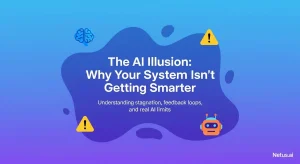
The illusion of AI: Your system's intelligence gap | NetusAI
Stop wasting marketing spend! Most AI tools don’t learn from results, causing content stagnation and low engagement. Discover why your generative AI isn’t getting smarter and what system actually learns and optimizes content.
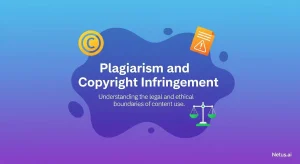
Plagiarism and copyright infringement | NetusAI
Learn the distinct differences between plagiarism and copyright infringement. Understand the ethical and legal implications and get practical strategies for avoiding both academic and creative work with NetusAI.
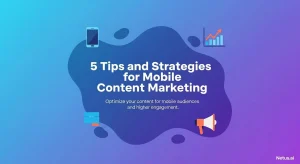
Tips and strategies for mobile content marketing | NetusAI
Optimized for mobile-first indexing, learn 5 essential strategies to capture attention, enhance engagement and drive leads and sales with your mobile content marketing.
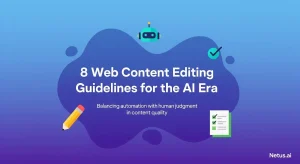
Web content editing guidelines for the AI era | NetusAI
Review web content editing guidelines for the AI era. Learn how to edit AI-generated content, ensure authenticity and optimize for SEO and readability.
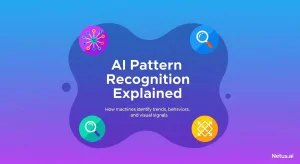
Explaining AI pattern recognition | NetusAI
AI pattern recognition enables machines to identify trends for diverse applications, from detecting plagiarism to fraud. Discover its processes, models and real-world benefits.
